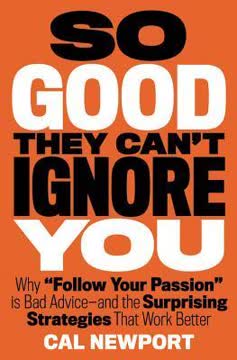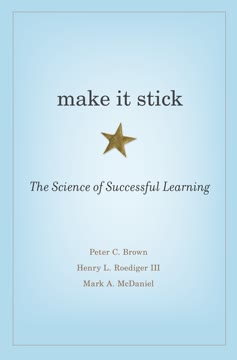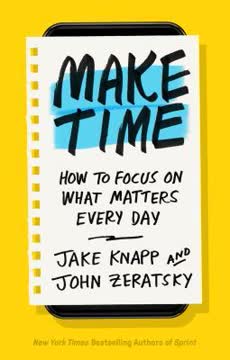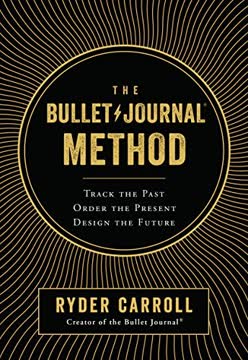Key Takeaways
1. The Slip-Box Method: A Revolutionary Approach to Note-Taking and Knowledge Management
"The slip-box provides the missing step to turn work on something into actual work."
The Slip-Box System is a method of note-taking and knowledge management developed by Niklas Luhmann, a prolific German sociologist. At its core, the system consists of three main components:
- Fleeting notes: Quick, temporary reminders of ideas
- Literature notes: Brief summaries of what you've read
- Permanent notes: Well-formulated ideas connected to your existing knowledge
The power of this system lies in its ability to externalize our thinking process. By creating a network of interconnected notes, we build an "external brain" that helps us develop ideas, make connections, and generate insights over time. This approach transforms note-taking from a passive activity into an active thinking tool.
Key benefits of the Slip-Box Method:
- Reduces cognitive load by offloading information
- Encourages continuous engagement with ideas
- Facilitates unexpected connections and insights
- Provides a structured approach to developing complex thoughts
2. Writing is Thinking: The Power of External Scaffolding
"Writing is, without dispute, the best facilitator for thinking, reading, learning, understanding and generating ideas we have."
Thinking through writing is a fundamental principle of the Slip-Box Method. By externalizing our thoughts through writing, we engage in a dialogue with ourselves and our ideas. This process forces us to clarify our thinking, identify gaps in our understanding, and make connections that might not be apparent when ideas remain in our heads.
The act of writing permanent notes for the slip-box is not just about recording information, but about:
- Translating ideas into our own words
- Connecting new information to existing knowledge
- Identifying questions and areas for further exploration
- Developing arguments and lines of thought
By treating writing as an integral part of the thinking process, rather than a separate activity that comes after thinking, we can dramatically improve our ability to understand complex ideas and generate original insights.
3. From Collector to Creator: Transforming Information into Knowledge
"The slip-box is not a collection of notes. Working with it is less about retrieving specific notes and more about being pointed to relevant facts and generating insight by letting ideas mingle."
Active engagement with information is crucial for transforming it into knowledge. The Slip-Box Method shifts our approach from passive collection to active creation. Instead of simply accumulating information, we process it, connect it to our existing knowledge, and use it to generate new ideas.
This transformation happens through several key steps:
- Selective reading and note-taking
- Reformulating ideas in our own words
- Connecting new notes to existing ones
- Regularly reviewing and refining our network of notes
By engaging with information in this way, we move beyond mere accumulation to genuine understanding and creation. The slip-box becomes not just a storage system, but a thinking partner that helps us develop and refine our ideas over time.
4. The Art of Linking: Building a Network of Ideas
"By adding links between notes, Luhmann was able to add the same note to different contexts."
Creating connections between ideas is at the heart of the Slip-Box Method. By linking notes to one another, we create a web of knowledge that reflects the interconnected nature of ideas. This network allows us to:
- Discover unexpected relationships between concepts
- View ideas from multiple perspectives
- Develop more nuanced understanding of complex topics
- Generate new insights through the combination of existing ideas
The process of linking notes is not just about organizing information, but about actively thinking about how ideas relate to one another. As we add new notes and create new links, our network of knowledge grows more complex and valuable over time.
Key types of links in the slip-box:
- Direct references to related notes
- Index entries for easy access to important topics
- Overview notes that summarize clusters of ideas
- Structural notes that outline arguments or lines of thought
5. Flexibility and Creativity: The Advantages of Bottom-Up Thinking
"Developing arguments and ideas bottom-up instead of top-down is the first and most important step to opening ourselves up for insight."
Bottom-up thinking is a key feature of the Slip-Box Method. Rather than starting with a predetermined structure or thesis, we allow ideas and arguments to emerge organically from our collection of notes. This approach has several advantages:
- Openness to new ideas and unexpected connections
- Reduced bias and preconceived notions
- Greater flexibility in developing arguments
- Increased potential for original insights
By focusing on individual ideas and their connections, rather than trying to fit information into a preexisting framework, we can develop more robust and creative thinking. The slip-box becomes a tool for exploration and discovery, rather than just a means of organizing information we already know.
Examples of bottom-up thinking in action:
- Discovering a new research direction through unexpected note connections
- Developing a novel argument by combining ideas from different fields
- Identifying gaps in existing knowledge by seeing what's missing in our network
6. The Feedback Loop: How the Slip-Box Improves Learning and Understanding
"The slip-box provides an external scaffold to think in and helps with those tasks our brains are not very good at, most of all objective storage of information."
Continuous feedback is a crucial aspect of the Slip-Box Method. As we interact with our notes, we constantly engage in a process of review, refinement, and expansion. This creates a powerful feedback loop that enhances our learning and understanding over time.
Key elements of the slip-box feedback loop:
- Regular review of existing notes
- Updating and refining ideas based on new information
- Identifying gaps in knowledge and areas for further exploration
- Testing our understanding by attempting to explain ideas in our own words
This feedback process helps us to:
- Reinforce our learning through spaced repetition
- Identify and correct misconceptions
- Deepen our understanding of complex topics
- Generate new questions and lines of inquiry
By externalizing our thinking and creating a system for regular engagement with our ideas, we create a powerful tool for continuous learning and intellectual growth.
7. From Notes to Manuscripts: The Seamless Transition to Writing
"If you write, it is more likely that you understand what you read – and only if you understand what you read will you be able to bring ideas from different lines of thought together."
Effortless writing becomes possible when we use the Slip-Box Method effectively. By consistently developing and connecting our ideas through notes, we create a rich foundation for our writing projects. When it's time to write a paper or book, we're not starting from scratch, but drawing on a well-developed network of ideas.
The process of transitioning from notes to manuscript involves:
- Identifying clusters of notes relevant to our topic
- Arranging these notes into a preliminary structure
- Expanding on the ideas in our notes to create draft sections
- Refining and connecting these sections into a coherent whole
Benefits of this approach:
- Reduced writer's block, as we're never facing a blank page
- More coherent and well-developed arguments
- Easier integration of diverse ideas and sources
- Greater productivity, as much of the thinking is already done
By treating writing as a continuous process of development rather than a discrete task, we can produce higher-quality work with less stress and effort.
8. Overcoming Bias: How the Slip-Box Enhances Critical Thinking
"Confirmation bias is tackled here in two steps: First, by turning the whole writing process on its head, and secondly, by changing the incentives from finding confirming facts to an indiscriminate gathering of any relevant information regardless of what argument it will support."
Challenging our assumptions is a key benefit of the Slip-Box Method. By externalizing our thoughts and creating a network of ideas, we create opportunities to confront our biases and broaden our perspectives. The slip-box serves as a tool for critical thinking by:
- Encouraging us to consider multiple viewpoints
- Making contradictions and inconsistencies more visible
- Providing a structure for systematically questioning our assumptions
- Facilitating the integration of diverse sources and ideas
Strategies for using the slip-box to enhance critical thinking:
- Actively seek out and note conflicting viewpoints
- Regularly review and question the connections between our notes
- Use the slip-box to identify gaps in our knowledge or reasoning
- Engage in dialogue with our past selves through our notes
By creating an external system for developing and challenging our ideas, we can improve the quality and rigor of our thinking over time.
9. The Habit of Smart Note-Taking: Integrating the Method into Daily Life
"Just by working with the slip-box, we retrieve old ideas and facts on an irregular basis and connect them with other bits of information – very much how experts recommend we learn."
Consistent practice is essential for reaping the full benefits of the Slip-Box Method. By integrating smart note-taking into our daily routines, we can transform our thinking and productivity over time. Key habits to develop include:
- Always reading with a pen in hand, ready to take notes
- Regularly processing fleeting notes into permanent notes
- Spending time each day reviewing and connecting existing notes
- Using the slip-box as a starting point for new ideas and projects
Benefits of making smart note-taking a habit:
- Improved retention and understanding of what we read
- Increased ability to make connections between diverse ideas
- Greater productivity in writing and research
- Continuous development of our knowledge and thinking skills
By consistently engaging with our slip-box, we create a virtuous cycle of learning and creation that can dramatically enhance our intellectual capabilities over time.
Last updated:
FAQ
What's "How to Take Smart Notes" about?
- Focus on Note-Taking: "How to Take Smart Notes" by Sönke Ahrens is centered around a note-taking technique inspired by Niklas Luhmann's Zettelkasten method, which emphasizes creating a network of interconnected notes to enhance writing, learning, and thinking.
- Boosting Productivity: The book outlines how this method can significantly boost productivity by transforming the way we approach writing and research, making it more efficient and enjoyable.
- Tool-Agnostic Approach: Ahrens keeps the book tool-agnostic, focusing on the principles of the Zettelkasten method rather than specific software, making it adaptable to both digital and analog systems.
Why should I read "How to Take Smart Notes"?
- Enhance Writing Skills: The book provides a systematic approach to improve writing skills by integrating note-taking into the writing process, making it easier to develop and articulate ideas.
- Improve Learning and Thinking: It offers strategies to enhance learning and critical thinking by encouraging the reader to engage deeply with the material and make meaningful connections.
- Practical and Timeless: Ahrens presents a practical method that is not dependent on the latest technology, focusing instead on timeless principles that can be applied across various disciplines and professions.
What are the key takeaways of "How to Take Smart Notes"?
- Writing as Thinking: Writing is not just a way to present ideas but a tool for thinking and developing them. The process of writing helps clarify thoughts and generate new insights.
- Interconnected Notes: The Zettelkasten method emphasizes creating a network of notes that are interconnected, allowing for the emergence of new ideas and insights through the relationships between notes.
- Simplicity and Structure: The method advocates for simplicity in note-taking and a structured approach to organizing notes, which helps in managing complex information and ideas effectively.
How does the Zettelkasten method work according to Sönke Ahrens?
- Two Types of Notes: The method involves creating two types of notes: literature notes, which summarize and reflect on the content of what you read, and permanent notes, which are written in your own words and connected to other notes.
- Linking Notes: Each note is linked to others, creating a web of ideas that can be explored and expanded upon, facilitating the development of complex arguments and insights.
- Indexing System: An index is used to keep track of notes and their connections, allowing for easy retrieval and exploration of ideas.
What are the benefits of using the Zettelkasten method?
- Enhanced Creativity: By connecting notes, the method encourages the discovery of new ideas and perspectives, fostering creativity and innovation.
- Efficient Writing Process: The method streamlines the writing process by providing a rich pool of interconnected ideas to draw from, reducing the time and effort needed to develop a coherent argument.
- Long-Term Learning: It supports long-term learning by encouraging the continuous development and refinement of ideas, making it easier to retain and apply knowledge.
How can "How to Take Smart Notes" improve my academic writing?
- Structured Workflow: The book provides a structured workflow that integrates reading, note-taking, and writing, making the process more efficient and less overwhelming.
- Focus on Understanding: It emphasizes the importance of understanding and engaging with the material, which leads to more insightful and well-supported arguments in academic writing.
- Avoiding Writer's Block: By continuously developing ideas through notes, the method helps prevent writer's block, as you always have a starting point for your writing.
What are the best quotes from "How to Take Smart Notes" and what do they mean?
- "One cannot think without writing." This quote highlights the central theme of the book: writing is an essential tool for thinking and developing ideas.
- "Writing is not what follows research, learning or studying, it is the medium of all this work." This emphasizes the idea that writing should be integrated into the entire process of learning and research, not just the final step.
- "The quality of a paper and the ease with which it is written depends more than anything on what you have done in writing before you even made a decision on the topic." This underscores the importance of preparation and the role of note-taking in producing high-quality writing.
How does Sönke Ahrens suggest overcoming common writing challenges?
- Breaking Down Tasks: Ahrens suggests breaking down the writing process into smaller, manageable tasks, which helps maintain focus and reduce overwhelm.
- Regular Note-Taking: By taking regular notes and connecting them, you build a reservoir of ideas that can be drawn upon when writing, reducing the pressure of starting from scratch.
- Embracing Flexibility: The method encourages flexibility in the writing process, allowing you to adapt and refine your ideas as you go, rather than sticking rigidly to a preconceived plan.
What role does simplicity play in the Zettelkasten method?
- Focus on Essentials: The method emphasizes focusing on the essentials and avoiding unnecessary complexity, which helps maintain clarity and efficiency in the note-taking process.
- Standardized Format: By using a standardized format for notes, the method reduces the cognitive load associated with organizing and retrieving information.
- Facilitating Connections: Simplicity in note-taking facilitates the creation of connections between ideas, which is crucial for generating new insights and understanding complex topics.
How does "How to Take Smart Notes" address the issue of information overload?
- Selective Note-Taking: The method encourages selective note-taking, focusing on the most relevant and insightful information, which helps manage the volume of information.
- Interconnected System: By creating an interconnected system of notes, the method allows for efficient retrieval and exploration of ideas, reducing the feeling of being overwhelmed by information.
- Continuous Refinement: The process of continuously refining and connecting notes helps distill information into its most useful and meaningful form, making it easier to manage and apply.
How can the Zettelkasten method be applied to digital tools?
- Tool-Agnostic Approach: Ahrens emphasizes that the principles of the Zettelkasten method can be applied to both analog and digital tools, allowing for flexibility in implementation.
- Digital Note-Taking Apps: Many digital note-taking apps, such as Obsidian or Roam Research, support the creation of interconnected notes, making them suitable for implementing the Zettelkasten method.
- Focus on Principles: Regardless of the tool used, the focus should remain on the principles of creating, connecting, and indexing notes to build a network of ideas.
What is the significance of the quote "Writing itself makes you realise where there are holes in things"?
- Revealing Gaps: Writing helps reveal gaps in understanding and arguments, prompting further exploration and refinement of ideas.
- Clarifying Thoughts: The process of writing forces you to clarify your thoughts and articulate them clearly, which can lead to new insights and a deeper understanding of the topic.
- Iterative Process: Writing is an iterative process that involves revising and refining ideas, and this quote highlights the importance of embracing this process to improve the quality of your work.
Review Summary
How to Take Smart Notes presents a note-taking method based on Niklas Luhmann's Zettelkasten system. Many readers found it transformative for their learning and writing processes, praising its potential to improve productivity and knowledge retention. The book emphasizes writing as thinking and advocates for a linked, non-hierarchical system of notes. While some critics felt it was repetitive or lacked practical examples, most readers appreciated its insights into effective reading, note-taking, and knowledge management. The book's impact extends beyond academia, appealing to lifelong learners and writers across various fields.
Similar Books










Download PDF
Download EPUB
.epub digital book format is ideal for reading ebooks on phones, tablets, and e-readers.




